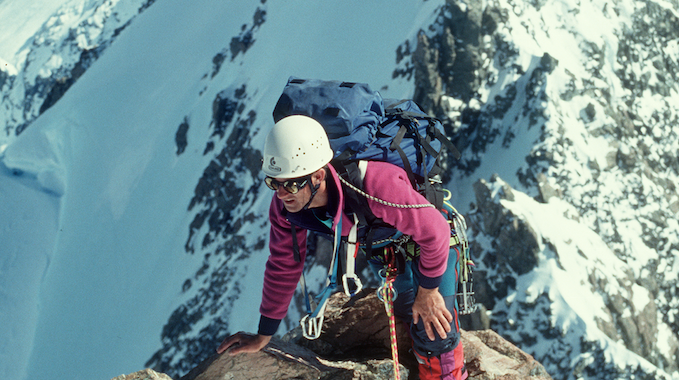Photo: On the North Ridge of Mt Cook Aoraki, NZ, 1994. Photo Lucas Trihey
ESS staff have a background in the outdoors. Many are qualified guides, climbers, mountaineers, white-water paddlers and trail runners. We have doctors who’ve won the toughest Sky Runs (hello Jacinta!) and who hold BASE Jump and Windsuit records (gidday Glenn!).
Our regular staff have climbed Mt Cook in NZ, are expeditioners with experience in Antarctica, the Australia high country, the dark forests and alpine areas of Tassie and in the mountain areas in the Karakoram of northern Pakistan and western China. We’ve guided on the snow-capped mountains of Africa and have trekked in the Kimberley of WA.
What do our staff experts wear in the bush?
Well… what they DON”T wear is cotton.
In the world of bush search and rescue, canyon guiding, climbing mountains and inhospitable cold and wet environments cotton is known as “The Fatal Fabric”.
Cotton is hydro-phyllic – it loves water – so it makes a great towel. In fact it’s been reported as being able to absorb up to 27 times its own weight in water. If you wear cotton in a cold and wet place you’ll end up with a damp, clammy garment against your skin. It can get this water from rain or from your sweat. The fabric saps the heat out of your body, makes the battle against hypothermia impossible to win and it takes ages to dry.
So when it’s cold and wet you’ll only see ESS staff wearing synthetics or a good quality merino garment.
There’s more info in this article: https://www.gizmodo.com.au/2015/02/why-cotton-kills-a-technical-explanation/
